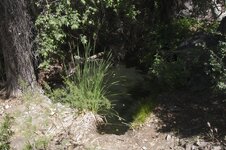Real de Tayopa Tropical Tramp
Gold Member
Side Thought. Bars were approx 45 Kilos each, in established camps, there were generally two to a burro or Mule for a balanced load.
45Kilos is approximately 90 lbs,
of course there were many different sized bars, such as those which were the contents of the melting flask which were merely dumped on the ground creating barsof app,5- 600 lbs, in order to defeat the Bandits - they required a cart to transport them, which the bandits did not have.
45Kilos is approximately 90 lbs,
of course there were many different sized bars, such as those which were the contents of the melting flask which were merely dumped on the ground creating barsof app,5- 600 lbs, in order to defeat the Bandits - they required a cart to transport them, which the bandits did not have.


 ? Don't know, but its something to ponder. Certainly could have if there was a sustained dry period. After their departure, over time, the river returned to its normal banks. And; I would say, didn't have the unnatural absorption from the sandy gravel laden desert floor areas fed by the canal systems.
? Don't know, but its something to ponder. Certainly could have if there was a sustained dry period. After their departure, over time, the river returned to its normal banks. And; I would say, didn't have the unnatural absorption from the sandy gravel laden desert floor areas fed by the canal systems. 



